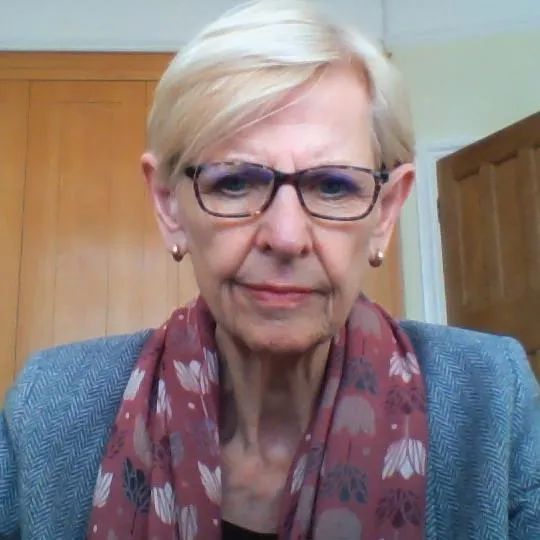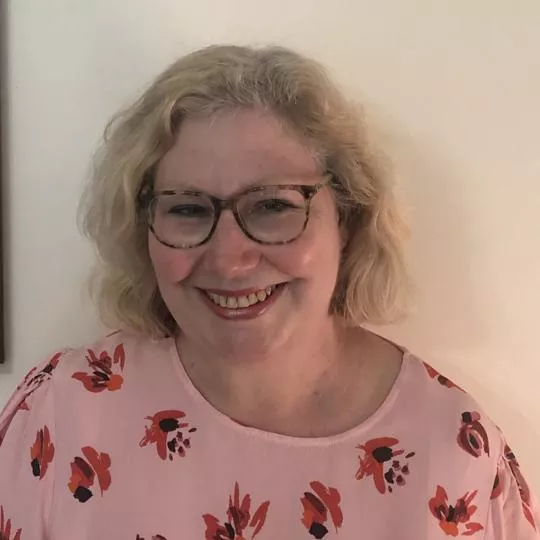Using co-design methodologies, we’ve worked with patients, carers, clinicians and industry experts to design products based on actual needs in everyday life for people living with these long-term health conditions.
Patricia Grocott, Professor of Nursing Technology and Innovation
25 February 2022
How patients teamed up with researchers, clinicians, designers, and manufacturers to co-design their medical equipment.
If you or someone you care for has a rare medical condition, it can be challenging to find solutions to some of the barriers which arise in everyday life. You may need to solve problems relating to your condition yourself, such as creating makeshift equipment essential for simply going outside or that allow you to be more independent. The creativity and ingenuity of improvised solutions sounds inspiring, but what if you were able to channel your ideas and experiences into a collaboration with the healthcare professionals who help you manage your condition? And companies with the expertise and resources to design a more, comfortable, safer, and useful solution?
Researchers at King’s College London have been pioneering this kind of collaboration, more commonly referred to as co-design. And the approach they’ve developed has been helping people with rare, long-term conditions live better lives, offered healthcare solutions for clinicians, and helped business create viable products for customers to invest in.
Through their tried and tested co-design methodology, Patricia and her team in the Florence Nightingale Faculty of Nursing, Midwifery & Palliative Care have been bringing people together to find, develop and continuously evaluate solutions. The team have become a key link between product users, healthcare, designers, and manufacturers. And the way they are working is influencing how medical products are made.
Developing a formula for success
The co-design methodology that has led to this success is something which Patricia Grocott, and her team - Dr Tanya Graham and Dr Yan-Shing Chang - have been developing for several years.
It began with the WEB (Woundcare for Epidermolysis Bullosa) project to develop, create, and evaluate wound care solutions for people living with Epidermolysis Bullosa (EB) – a rare condition which causes widespread blistering and wounds. The results were a range of garments to replace the bandages patients needed to hold dressings in place to protect their wounds, and which gave them greater freedom of movement and took less time than bandaging. The Skinnies garments are made by a therapeutic clothing manufacturer, Skinwear Limited and offered to EB patients in the United Kingdom through the National Health Service (NHS). The products are also marketed internationally online.
The success of this project became a springboard for further funding and Patricia and her team have been developing their co-design methodology to support development and evaluation of devices ever since. They have continued to work closely with the EB community, as well as those with another rare skin condition - Xeroderma Pigmentosum (XP) – an intolerance of ultraviolet radiation (UVR) from natural light.
So far, Patricia and her team have worked with over 300 patients and families as well as clinicians, academic engineers, and manufacturers to co-design medical devices to replace the ‘making-do’ people with these conditions have been forced to adopt.
In the past, industry would work on its own to develop a product or device for a health condition and release it for sale without ever speaking to the people it was designed for or the clinicians who would recommend its use. If a product comes to the market that doesn’t work for these groups, then it is less likely to be successful, because it does not solve the problem it is trying to fix.
Dr Tanya Graham, Research Fellow
How co-designing devices works
There are three main strands to the co-design approach developed by Patricia and her team. The first is the participatory co-design, which brings together patients, parents, carers, clinicians, engineers, and manufacturers to design and evaluate devices. This recognises the expert knowledge that patients have about their condition and the role of clinicians who often advise patients on which products to use. This collaborative way of working is central to ensure a medical device is safe, effective, and acceptable to people who use it.
Second is the online platform to record patient and clinician communication, management, and outcome measurement. This is done using a method of clinical note taking and outcome measurement called TELER©. This provides patients with a set of indicators they use to score how effective the product is and if it is performing in the way they need it to. Clinicians can assess these data and record treatment details. This system allows patients and clinicians to consult online without needing to be face-to-face. It also means patients and their families don’t have to make long journeys to one of the few specialist centres in the UK, saving them time, money and discomfort.
The indicators measure activities in everyday life people will need to do and are co-designed with the research team and patients. For example, if an indicator is to hold a glass of water, the outcome scores will be a list of how successfully they can do this, from not being able to hold a glass at all, to holding a glass without any problems. The easier the task is for the individual, the higher the product’s effectiveness score. The King’s research team collaborate with a Community Interest Company (HOST CIC) who own the TELER methodology to develop bespoke data capture platforms for patients to provide this feedback to clinicians during the research projects: Hand Therapy-Online and XP-Online. These platforms can be adopted in routine clinical care for ongoing product surveillance.
The third strand is to test the products through multiple case studies using the N of 1 trial methodology. This approach helps to ensure the experiences and costs to individuals using the products are captured. To offset the small number of people the products are tested with during the initial development phase, routine follow-up with each person happens over the longer-term, using Hand Therapy-Online and XP-Online to help ensure patients are getting the best product possible.
It is useful to see how the Hand Therapy online system has progressed overtime…useful to see how things have changed and to still be part of the group that is doing that…Good to be able to give feedback when you are not seeing someone…monitoring the gap spaces between fingers you can see if it is making a difference over time using the web-spacer glove…
Participant with EB in the GLOVED Project
Healing hands
People with severe types of EB experience extremely painful skin blistering and wounds leading to scarring. The scarring on people’s hands makes them contract and conjoin, making it difficult to move or use them. Restoring function to the hands requires painful surgery which takes time to recover from. People with EB often find the dressings, bandages and fixed splints needed during recovery difficult to tolerate and abandon them, which means the contractures happen again.
To help solve this problem, Patricia and her team set up two projects using their co-design approach: the Generation and evaLuation Of hand therapy deVices for Epidermolysis bullosa project (known as GLOVE) and later the Generation and evaLuation Of hand therapy deVices for Epidermolysis bullosa and Dupuytrens: Adjustable Splint Glove manufacturing and commercialisation project (known as GLOVED).

Image: Creating the SkinniesTM gloves at Skinwear Limited, a knitwear manufacturer.
Assembling patients with EB, their families, clinicians from St Thomas’ and Great Ormond Street hospitals in London, engineers from Cardiff University, health economists from the University of Surrey and IT experts from HOST CIC, the group tested the co-designed therapeutic gloves; the Hand Therapy-Online platform to track and monitor treatment, experiences and costs; and a prototype of an adjustable splint glove with sensors and robotics to help straighten bent fingers.
…working in a really busy clinical environment you don't have time to reflect on practice…working with the research team means you can really thrash out what can we do to try and improve things…
Senior Clinical Specialist Occupational Therapist for EB
The results from these projects have led to the development of more advanced versions of two therapeutic gloves with manufacturer Skinwear Limited which are now provided to patients via the NHS. These gloves are specially designed to replace the need for patients wrapping their fingers with bulky dressings bandages. One is a disposable dressing glove to protect blistered skin and the other a reinforced knitted glove to keep fingers separated. The project results have also led to advanced prototyping of a new adjustable splint glove, co-designed involving people with Dupuytren’s Contracture, where lumps and string-like cords develop in the palm of the hand, pulling the fingers inwards so they are unable to straighten.
…It would make a huge difference to my confidence to be able to have my left hand fixed again…Well, Patricia, I am interested and… personally feel strongly about this…I'm really delighted to find that someone is working on this and if there's any other way that I can be of any help, any assistance...
GLOVED project patient participant with Dupuytren’s Contracture
Lifesaving protection from natural light
Xeroderma Pigmentosum (XP) is a rare, inherited, incurable condition affecting approximately one in 250,000 of the general population. People with XP cannot tolerate ultraviolet radiation (UVR) from natural light, not just sunshine.
We cannot see or feel UVR, but it can cause normal cells to become cancerous. For people with XP, the damage caused by UVR cannot be repaired. Miniscule exposure can cause skin and eye cancers from around the age of eight. Preventing skin and eye cancers requires absolute protection from UVR. Protective films are applied to car windows, homes, schools, and offices. Outdoor activity requires full cover-up with clothing and headwear, even on a cloudy day.
While clothing can be purchased, any headwear is homemade. Patients and families say the headwear steams up, interferes with seeing, talking, and they receive unkind comments on their appearance. Many avoid all of this by not covering up, with disastrous consequences including eye damage/visual impairment, eye, and skin cancers.
…There has been extensive involvement and consultation by Kings, not only ourselves, but importantly patients and their families, which includes the Support Groups, so every patient had the opportunity to participate...
Clinical Nurse Specialists for children and adults with Xeroderma Pigmentosum
Through the XP project, prototypes have been developed with Cardiff University academic engineers and tested with patients of different ages to create acceptable visors for people with XP. Patricia and her team are now working in collaboration with The Manufacturing Technology Centre to advance commercially manufactured visors.
Small steps for broader change
Although the population of people with these rare genetic conditions is small, the research team’s work is making an impact in manufacturing and technology both in the UK and in Europe. They are also involving patients with more common conditions who can benefit from the new technologies. Manufacturers involved have fed back to Patricia and her team the value of being able to develop these products with patients and clinicians. The systems HOST CIC developed with the team for these projects have created opportunities for them to further develop the online platform.
The outcome measurement results from this research can be used to refine the co-designed devices and also explore their application with other health conditions. For example, the XP headwear may also benefit patients with other conditions that are aggravated by UVR.
It has taken considerable effort by the team, supported by our clinical, academic, and industry partners, to mature our methodologies and reach where we are today. We are excited to continue our co-design approach, working together to create and advance devices which are successful in supporting people living with long term health conditions.
Professor Patricia Grocott




